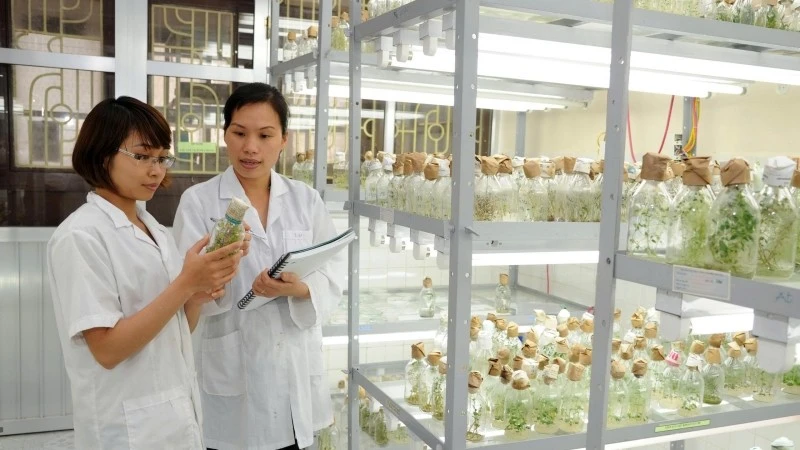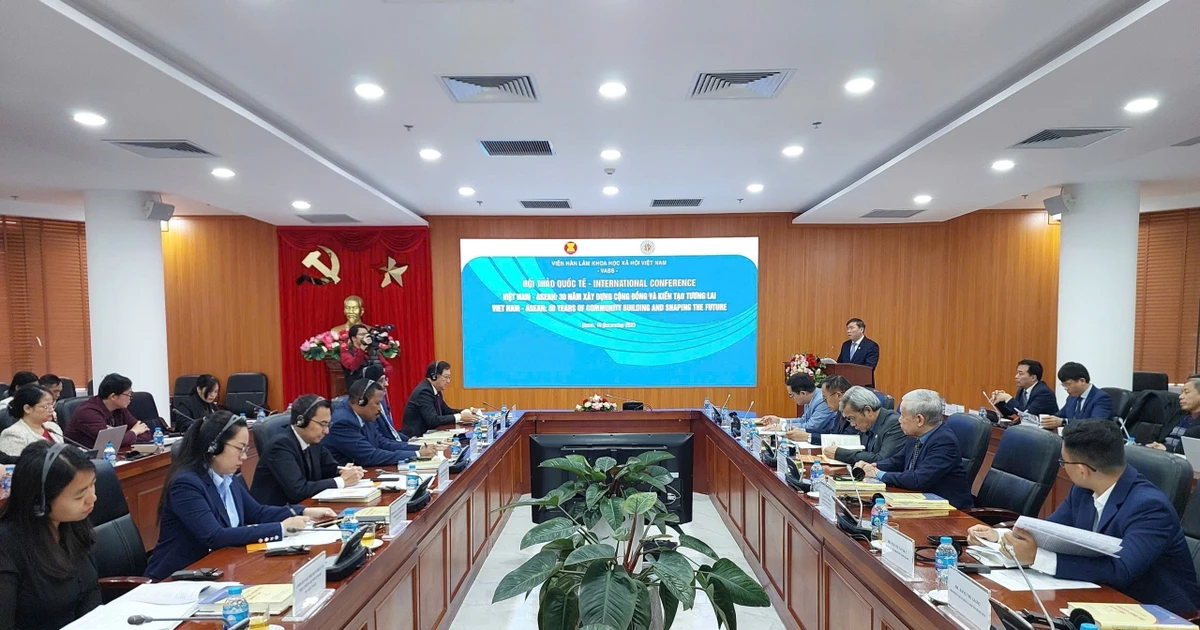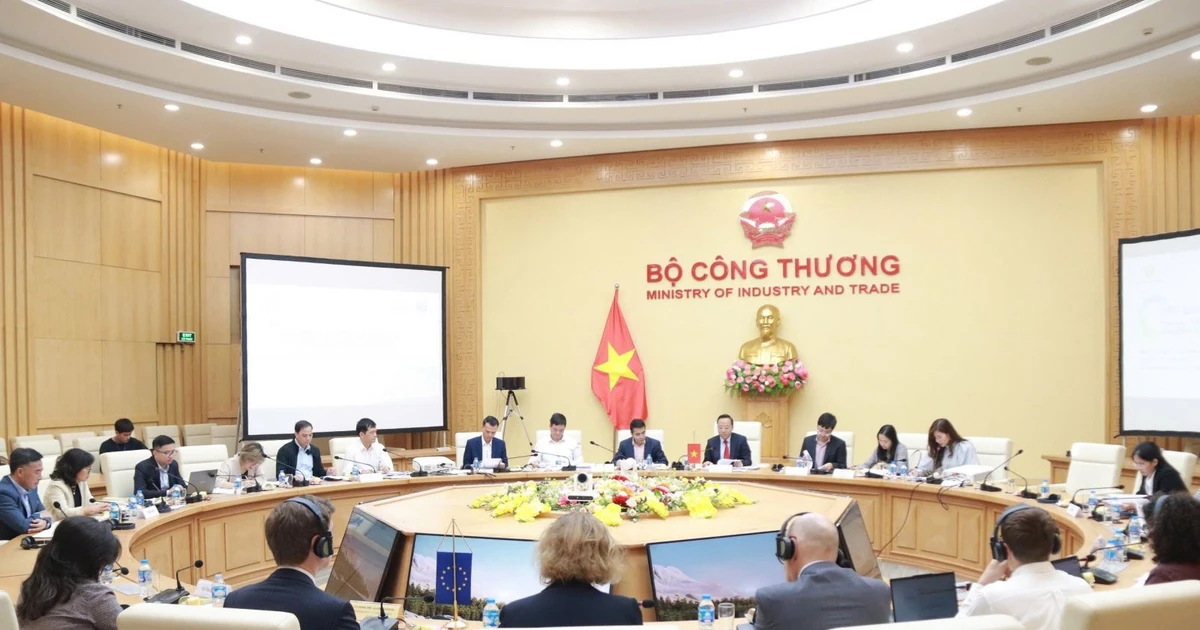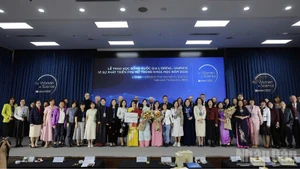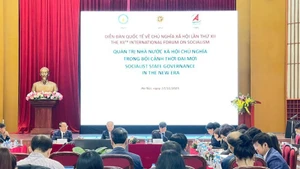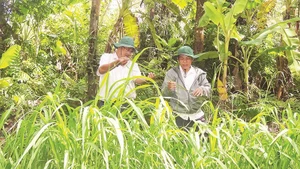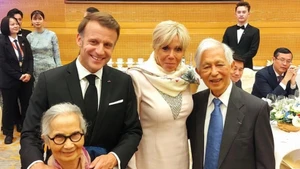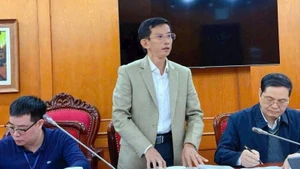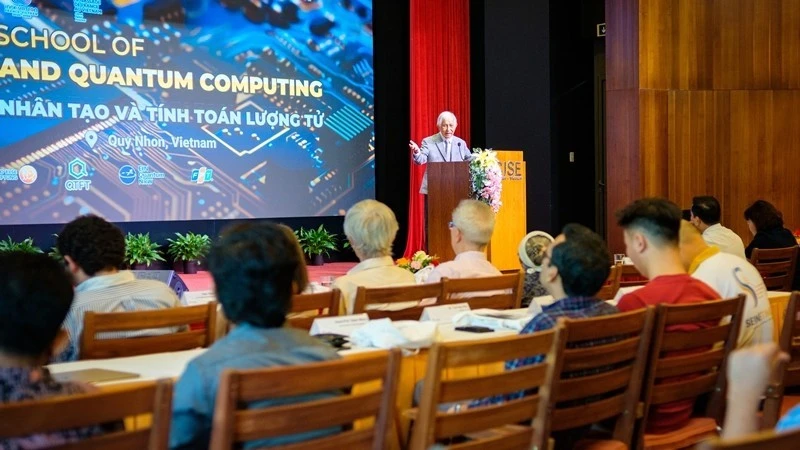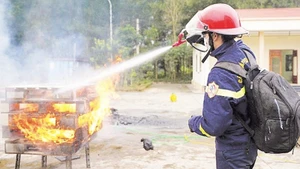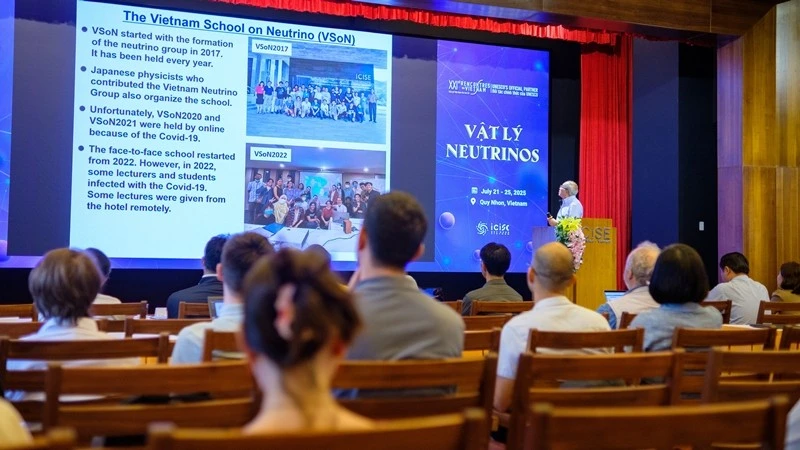However, despite their notable achievements, female scientists still face many challenges that need to be identified and addressed with appropriate solutions to encourage this “half of humanity” to contribute more actively to scientific research and technological development - a priority area receiving strong attention from the Party and State in the new era.
Proud contributions
According to Dr. Nguyen Quoc Sinh, the Institute of History under the Viet Nam Academy of Social Sciences, women working in science often live in two parallel worlds: one of knowledge, and one of responsibility. Between these two worlds, they constantly switch roles, from researcher to mother, wife, and daughter, in an unending rhythm of life. Despite this constant juggling, the number of women participating in scientific work is growing, not only in Viet Nam but worldwide.
At a recent conference on artificial intelligence, a specialist from the Viet Nam Academy of Science and Technology shared data on women engaged in scientific research in several countries, including Viet Nam.
For instance, in Germany, women make up 14% of researchers; in the European Union, 33%; in Japan, 15%; and in the Republic of Korea, 18%. Notably, in some Southeast Asian countries the proportion of female scientists is remarkably high, with the figure at 52% in both Thailand and the Philippines. In Malaysia and Viet Nam, the number of women involved in scientific activities is nearly equal to that of men.
Many outstanding Vietnamese female scientists have become a source of national pride, earning prestigious awards both at home and abroad. Specifically, the Kovalevskaia Award honours women in developing countries with exceptional contributions in science and technology.
Prominent examples include Associate Professor Nguyen Minh Tan (Ha Noi University of Science and Technology), whose research has elevated the value of Vietnamese agricultural products; Associate Professor Nguyen Thi Tram (Viet Nam National University of Agriculture), renowned for her hybrid rice breeding research; and Associate Professor Ho Thanh Van (Ho Chi Minh City University of Natural Resources and Environment), who was named among the top 23 of 100 outstanding scientists in 2000 by Asian Scientist magazine. Another is Professor Nguyen Thuc Quyen, a materials scientist recognised among the world’s most-cited researchers and one of the first Vietnamese women elected to the US National Academy of Engineering.
These accomplished women, like beautiful flowers, add colour and fragrance to Viet Nam’s scientific garden.
At the National Conference on Breakthroughs in Science, Technology, Innovation and Digital Transformation held on January 13, 2025, General Secretary To Lam affirmed: “With the goal of becoming a modern industrialised nation by 2030 and a developed, high-income country by 2045, we must regard science, technology, innovation, and digital transformation as the key driving forces.” In this age of knowledge, it would be impossible to overlook the intellect of half of humanity — women — many of whom are still “waiting to be given the opportunity to shine.”
Challenges and Solutions
According to Doctor Pham Thi Xuan Nga, Deputy Director of the Central and Central Highlands Branch of the Viet Nam Academy of Social Sciences, women continue to face greater difficulties in research compared to men. The first barrier is cultural and social tradition. Gender bias remains prevalent in many communities, limiting women’s opportunities for advancement. Balancing career and family also remains a persistent challenge for female scientists.
Policies and benefits for female scientists remain limited, while they must compete fiercely for time and research output in the modern technological era. These factors explain why, despite their high participation rate — nearly equal to that of men — the number of scientific publications and research projects by women remains lower.
Associate Professor Quach Thi Ngoc An (National University of Art Education) shared her experience conducting fieldwork to collect materials for research. She encountered cultural restrictions at certain heritage sites where women were not permitted to enter sacred areas, such as the main sanctum of communal houses, temple altars, or restricted tomb zones. Despite holding official permits and research equipment, she was sometimes denied entry or allowed only to “observe from a distance” simply because she was a woman. Traditional beliefs such as “women carry negative energy” or “sacred temples forbid women’s presence” continue to hinder female researchers.
The training of female scientists also shows imbalance, very few are from ethnic minority backgrounds. The lack of mechanisms for early identification and development, inspirational role models, and supportive academic ecosystems means the country is “missing out” on much of the potential talent.
To develop a high-quality female scientific workforce, specific and targeted support policies are needed. Some experts propose establishing a science and technology fund dedicated to female scientists. Nguyen Quoc Sinh noted that in major national scientific awards such as the Ho Chi Minh Prize and the State Prize, the number of female laureates remains very limited.
Therefore, the forms of recognition should be diversified, with specialised awards designed for women to honour their efforts in overcoming the “double burden” of career and family. There should be a minimum quota for research projects led by women and the creation of re-entry grants to support female scientists returning to academia after maternity leave. Moreover, a humane and inclusive research environment should be established, allowing women to balance family duties with creativity and innovation.
Doctor Ro-Dam Thi Bich Ngoc of the Institute of Sociology and Psychology (Viet Nam Academy of Social Sciences) emphasised that it is time to treat the development of female scientists, especially those from ethnic minority groups, as a strategic component of national human resource development.
Scholarship schemes and early talent-identification programmes should prioritise girls from disadvantaged regions, thereby enabling them to access better education and training in STEM (Science, Technology, Engineering, and Mathematics) fields. Mentorship mechanisms at university and postgraduate levels should also help by providing guidance on research and career development.
Promoting media coverage of successful ethnic minority female intellectuals will help them become inspiring role models for younger generations. When a young woman from the Xo Dang, Ba Na, Gia Rai, H’Mong, Dao, or E De communities becomes a scientist, she not only brings knowledge back to her community but also serves as a living testament to the power of education and gender equality.
Nurturing such women is ultimately an investment in the sustainability of regions and the nation itself, where science is not only knowledge but also the path to a brighter, more equitable future.
